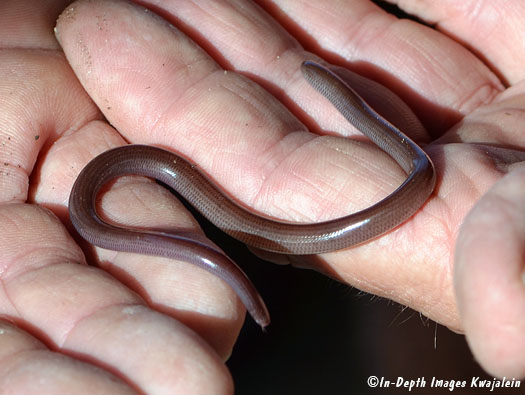
This small, worm-like blind snake is common on Kwajalein, usually found under plant pots or rocks, or sometimes in moist leaf litter. A native of African or Asia, it was probably accidentally introduced to Kwajalein and other Pacific Islands with the transport of soil or plants. Although at first glance they can easily be mistaken for worms, a close examination reveals a scaly body and the occasional appearance of a forked tongue. They are called the blind snake since their two eyes are underneath somewhat transparent scales on the head; while they can detect light and dark (enabling the snake to avoid light), the eyes cannot form images.

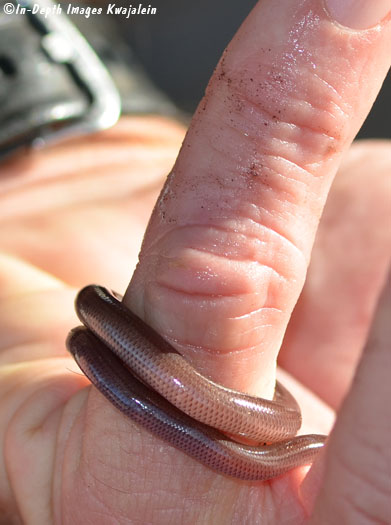
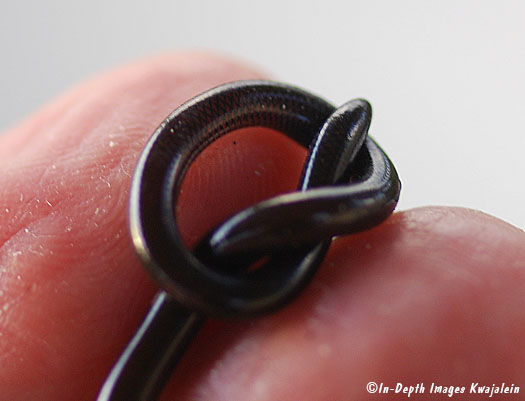
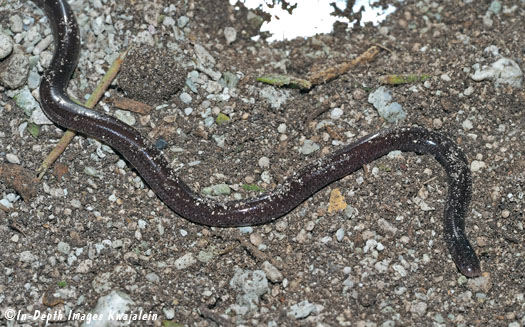
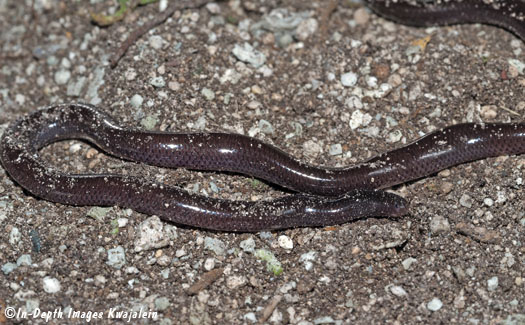
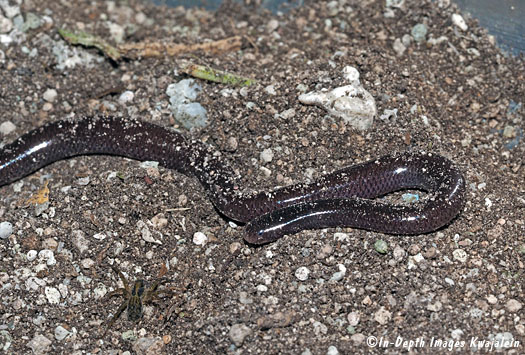
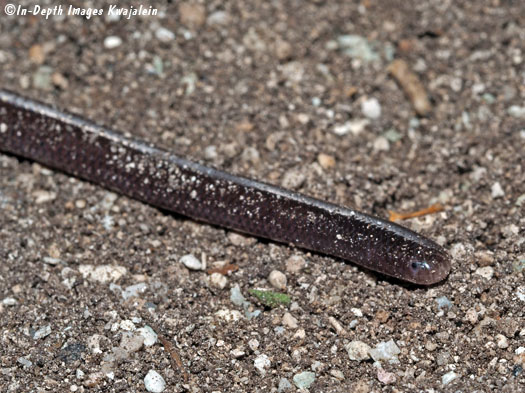
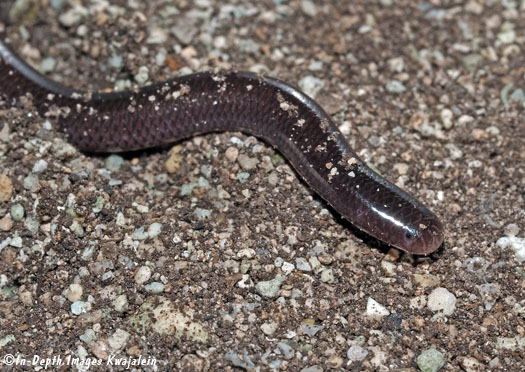
The forked tongue is extended in the photo below.
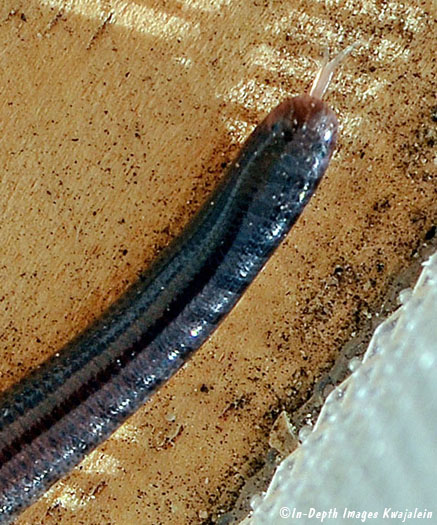
One of its black eyes is visible behind a transparent scale just back from the end of the animals below.
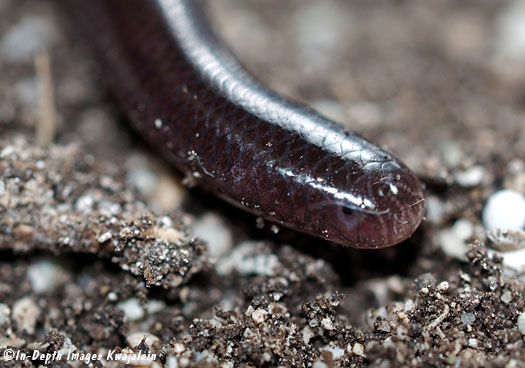
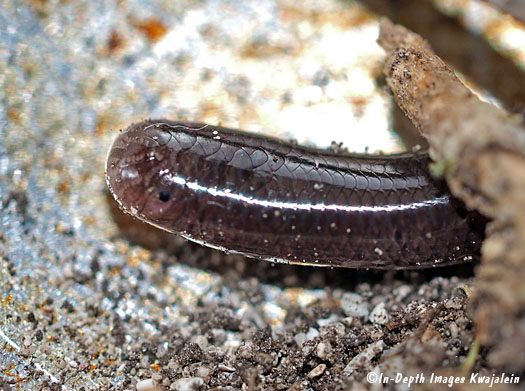
Created 21 February 2018